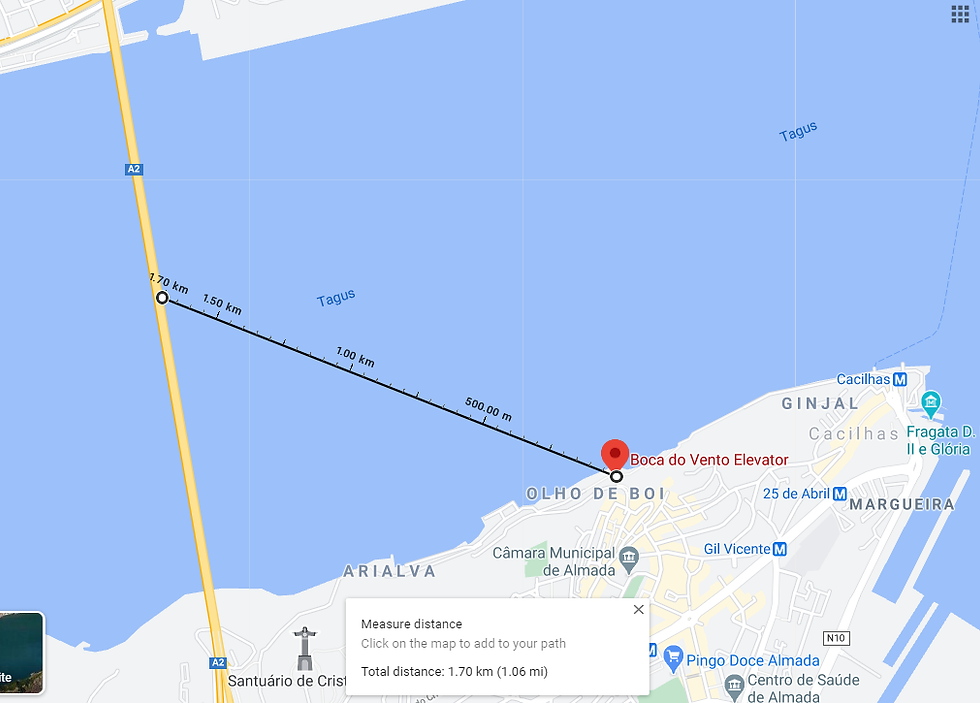Measuring deflections of 25 de Abril bridge from 1.7 km away
- streng20
- Nov 29, 2020
- 2 min read
Last Saturday I decided to go for a walk and I took my DSLR camera with me. Having watched many Computer Vision and OpenCV videos in my free time lately, I thought it would be a good idea to film the bridge for a couple of minutes and see what I can extract from the video later on during the weekend. So, here is the test setup:

Luckily, a train crossed the bridge during my first take, so I didn't have to wait for another 20 minutes until the next train arrived. To film this video, I used a Nikon D3100 DSLR camera and a low-end 300 mm lens (nothing fancy). I was 1.7 km away from the middle of the bridge:

To analyze the video, I used OpenCV and Python 3. I didn't really think the train would cause any detectable deflection to the bridge, especially since I was very far away, but I was mistaken. Here is what happened to the bridge when the train crossed it:
Here is the result of the measurement in pixels versus time. Currently I don't have enough info to convert pixels into centimeters or inches, but I will contact a few people soon and I hope to find for example the dimensions of the lower chord of the truss. That way, I will be able to convert in an approximate manner pixels into centimeters:

Interestingly, the video was able to detect deflections even before the train entered the bridge. These deflections must be due to a combination of normal traffic and wind.

Several research papers have investigated the possibility of using Computer Vision for Structural Health Monitoring of Engineering Structures. Up to now, I didn't think the technology was so accessible to the structural engineers. I recommend you to take a look at OpenCV and its capabilities.
If you found inspiration in this post, if you liked it or if you think someone you know might benefit from it, I kindly ask you to share this post and comment down below. Stay tuned for more!

![Measuring bridge vibrations and deflections with a camera [improved]](https://static.wixstatic.com/media/f92e28_f017f7498cac4d2594e4f1fdac3a56de~mv2.jpg/v1/fill/w_980,h_735,al_c,q_85,usm_0.66_1.00_0.01,enc_avif,quality_auto/f92e28_f017f7498cac4d2594e4f1fdac3a56de~mv2.jpg)

Hello, can you please share the source code of this? and if possible your contact details?